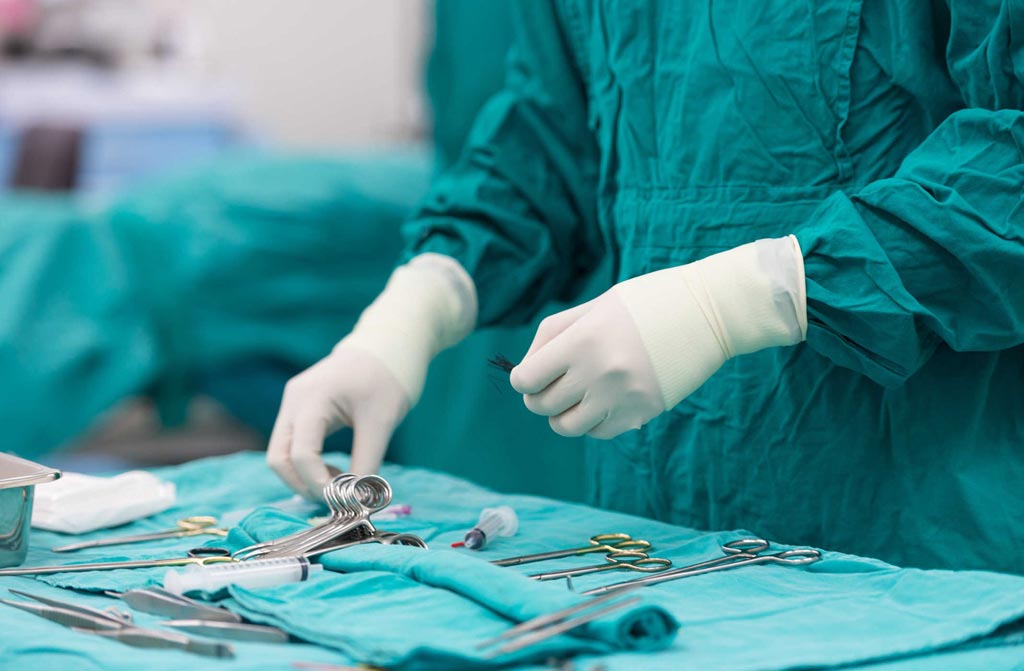Supermicrosurgery Helps Combat Post-Surgical Lymphedema
By HospiMedica International staff writers
Posted on 21 Feb 2018
Two supermicrosurgery techniques can help reduce the fluid retention caused by damage to the lymphatic system, one of the most serious side effects of cancer surgery.Posted on 21 Feb 2018
Refined by surgeons at the Medical University of Vienna (MedUni; Austria), the two advanced surgical reconstruction techniques allow surgical sutures measuring just 0.3-0.8 mm to be used to reconstruct lymph vessels damaged during excision surgeries, which cannot be sutured using standard methods. Using high-performance microscopes, fluorescent liquids, and fluorescence cameras, surgeons can now treat lymphoedema effectively to decrease limb size, alleviate subjective symptoms and early fatigue, and slow disease progression.

Image: Research shows supermicrosurgery surgical reconstruction of lymph vessels reduces lymphedema (Photo courtesy of MedUni).
The first technique is lymphovenous bypass, which involves connecting lymph channels that are still intact to adjacent veins by suturing them together. As a result, the lymphatic fluid, which would otherwise permeate into the tissue, can be dissipated via the blood circulation. The second technique, vascularized lymph node transfer, involves transplanting intact lymph nodes and their surrounding tissue into the affected areas. The transplanted lymph nodes and vessels not only to absorb lymphatic fluid, but also release growth factors to stimulate the formation of new lymph vessels.
In both techniques, which can also be combined, the lymph channels are marked with a fluorescent fluid that can demonstrate where the lymph channels run, so that breaks are clearly visible under the surgical microscope. Key aspects of both procedures include correct patient selection, using a precise no-touch, atraumatic lymph harvesting technique, undertaking aggressive adhesionolysis in the area of injury, and meticulous microsurgical technique.
“These operations require a very experienced microsurgeon using specialized instruments and a modern, high-performance microscope. The suture material is thinner than a hair and the needle so fine that you cannot see it with the naked eye,” said Christine Radtke, MD, of MedUni Vienna and Vienna General Hospital. “These lymphatic surgery techniques are still relatively unknown, even in the specialist world. However the procedure is worthwhile, since patients describe immediate pain reduction and a significant improvement in their everyday life.”
Chronic lymphedema is most common in breast cancer patients treated with a combination of surgery, chemotherapy, and radiation, but can occur in all forms of cancer requiring full lymph node dissection in order to determine if further chemotherapy or radiation treatment is necessary. If too many lymph fluid channels are removed, downstream lymph fluid becomes trapped, leading to the lymphedema, which has traditionally been managed with a combination of physical therapy and compression bandages.
Related Links:
Medical University of Vienna














